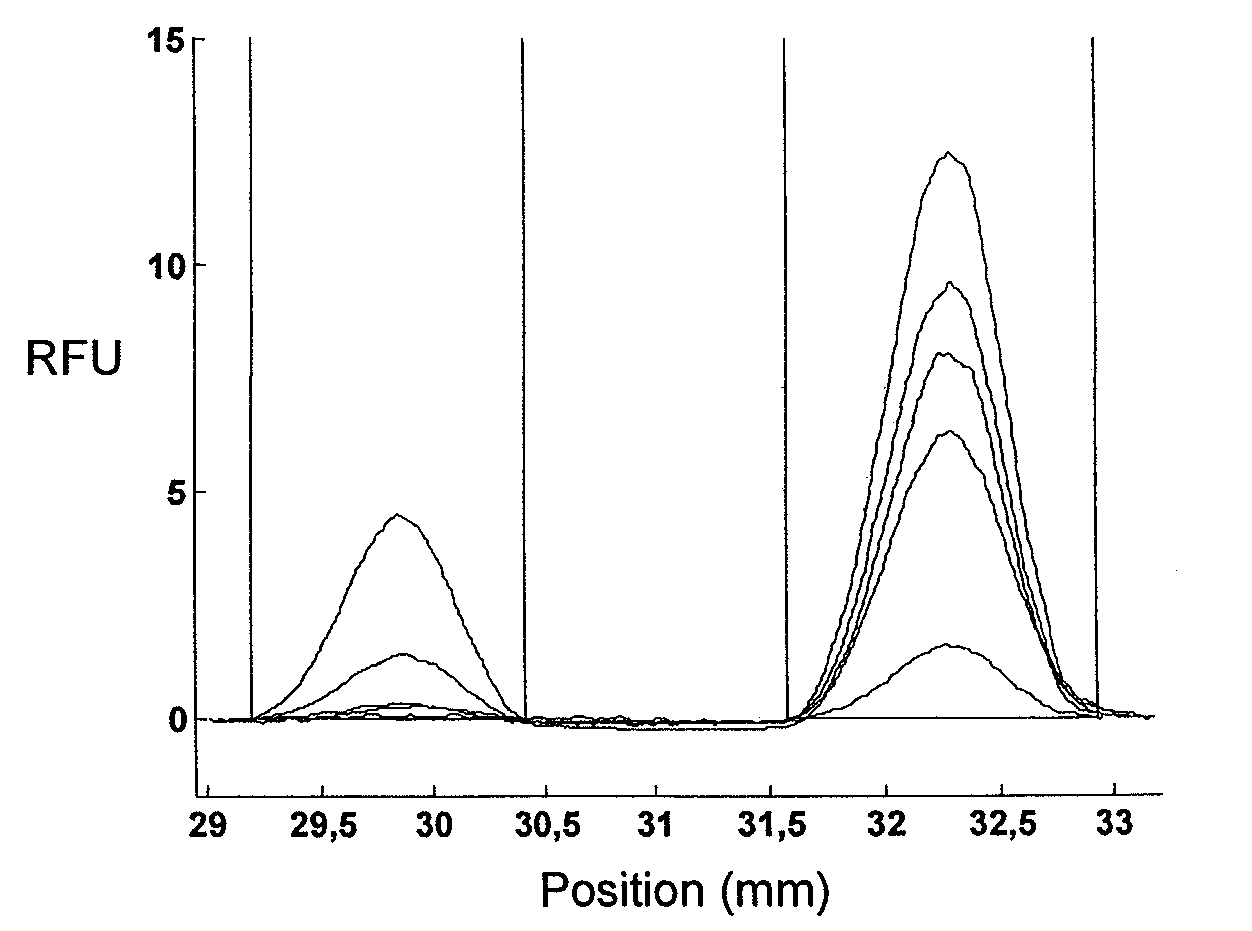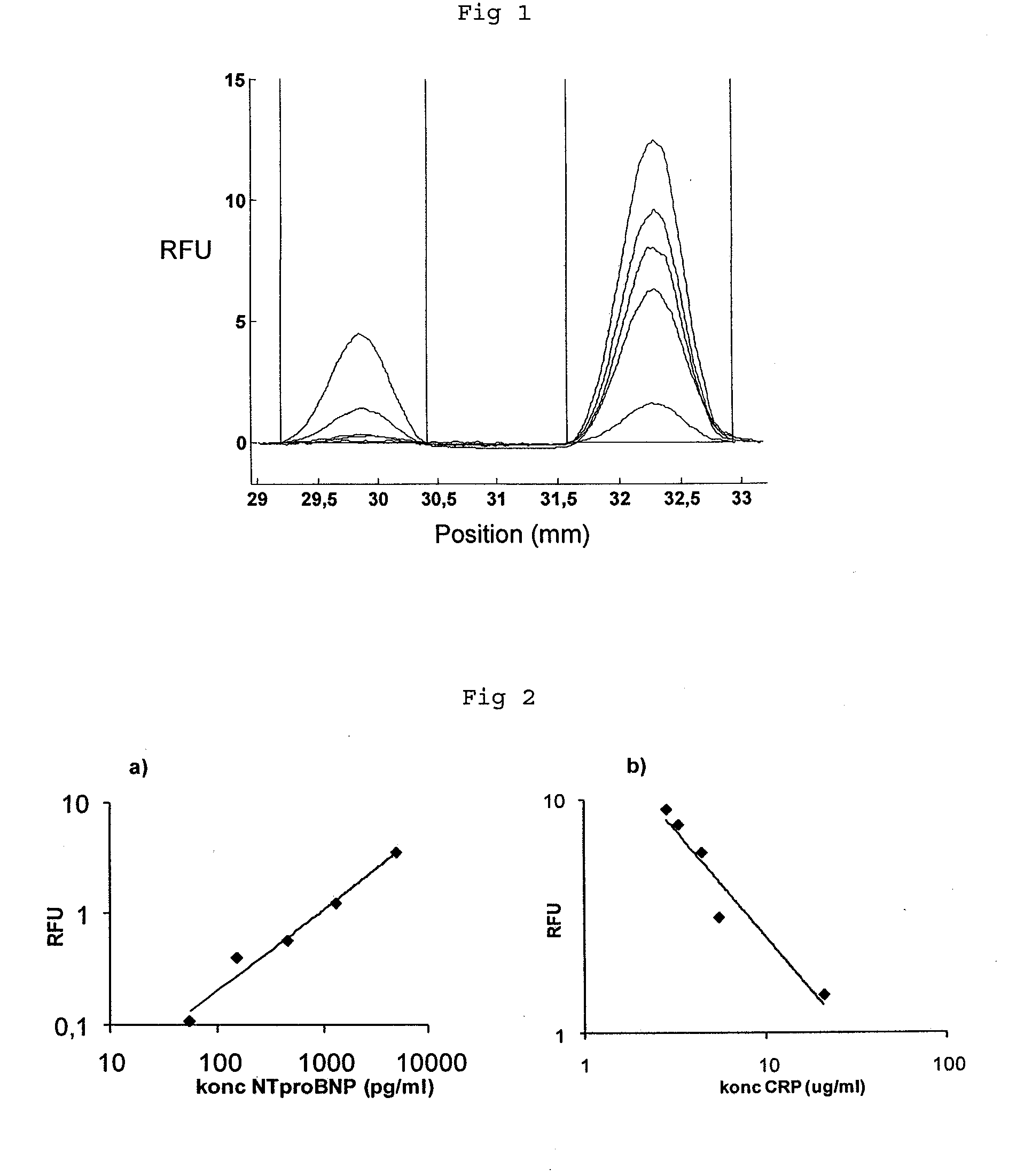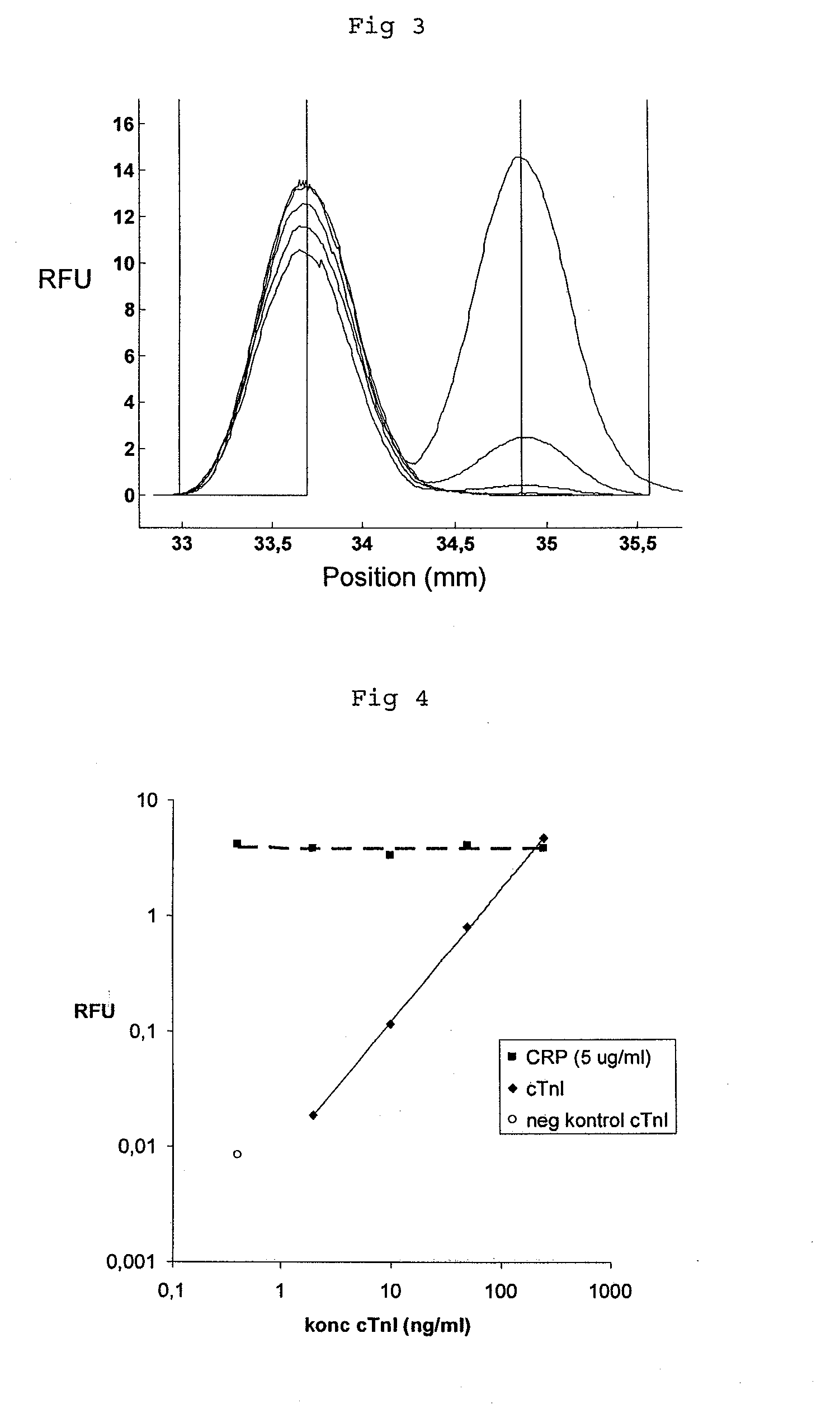Assay method and device
- Summary
- Abstract
- Description
- Claims
- Application Information
AI Technical Summary
Benefits of technology
Problems solved by technology
Method used
Image
Examples
example 1
[0078]Microfluidic chips were used as substrates which were injection molded in thermoplastics (Zeonor 1060R, Zeon, Japan), and oxidized in oxygen plasma. The oxidation took place during 6 minutes in a plasma chamber (400 Plasma System) at a working pressure of 0.26 mbar, 1000 W and with a flow of oxygen at 100 ml / min. The chips were immersed in a solution of 3 vol % APTES (Fluka) in 95% ethanol (Kemetyl, Sweden) for 2 hours. Curing took place over night at room temperature in air which allowed for crosslinking of the silane resulting in a stable amine functionalized surface. APTES coated surfaces were subsequently immersed in an oxidized 2% dextran solution (Dextran T40 (40 kDa), Pharmacosmos, Denmark) for 2 hours, rinsed in MilliQ-H2O and further oxidized in 30 mM NaIO4 (Sigma Aldrich) for 2 hours.
[0079]The molded chips had one sample addition zone where sample can be added, one receiving zone with the capacity to receive at least a part of the sample, and one connecting zone esta...
example 2
[0084]The experiment of example 1 was repeated, but this time assaying the combination of cardiac troponin I (cTnI) and CRP. Chips and assays were prepared and carried out in the same way as described for example 1, with the modification of using monoclonal αcTnI for cTnI capture and detection. CRP was measured in a competitive format and cTnI in a sandwich format. Serum samples were prepared by spiking CRP depleted serum with known concentrations of CRP and cTnI. Five samples with constant concentration of CRP (5 μg / ml) and increasing concentration of cTnI (0, 2, 10, 50, 250 ng / ml) were prepared and assayed.
[0085]FIG. 3 shows the relative fluorescence intensity (RFU) as a function of position in the microfluidic channel. The integrated peaks were plotted as a function of concentration as described in example 1. The assay for cTnI exhibits a linear signal response to analyte concentration (FIG. 4) whereas the signal for CRP is constant. The CRP signal is not affected by the variatio...
PUM
 Login to View More
Login to View More Abstract
Description
Claims
Application Information
 Login to View More
Login to View More - R&D
- Intellectual Property
- Life Sciences
- Materials
- Tech Scout
- Unparalleled Data Quality
- Higher Quality Content
- 60% Fewer Hallucinations
Browse by: Latest US Patents, China's latest patents, Technical Efficacy Thesaurus, Application Domain, Technology Topic, Popular Technical Reports.
© 2025 PatSnap. All rights reserved.Legal|Privacy policy|Modern Slavery Act Transparency Statement|Sitemap|About US| Contact US: help@patsnap.com



